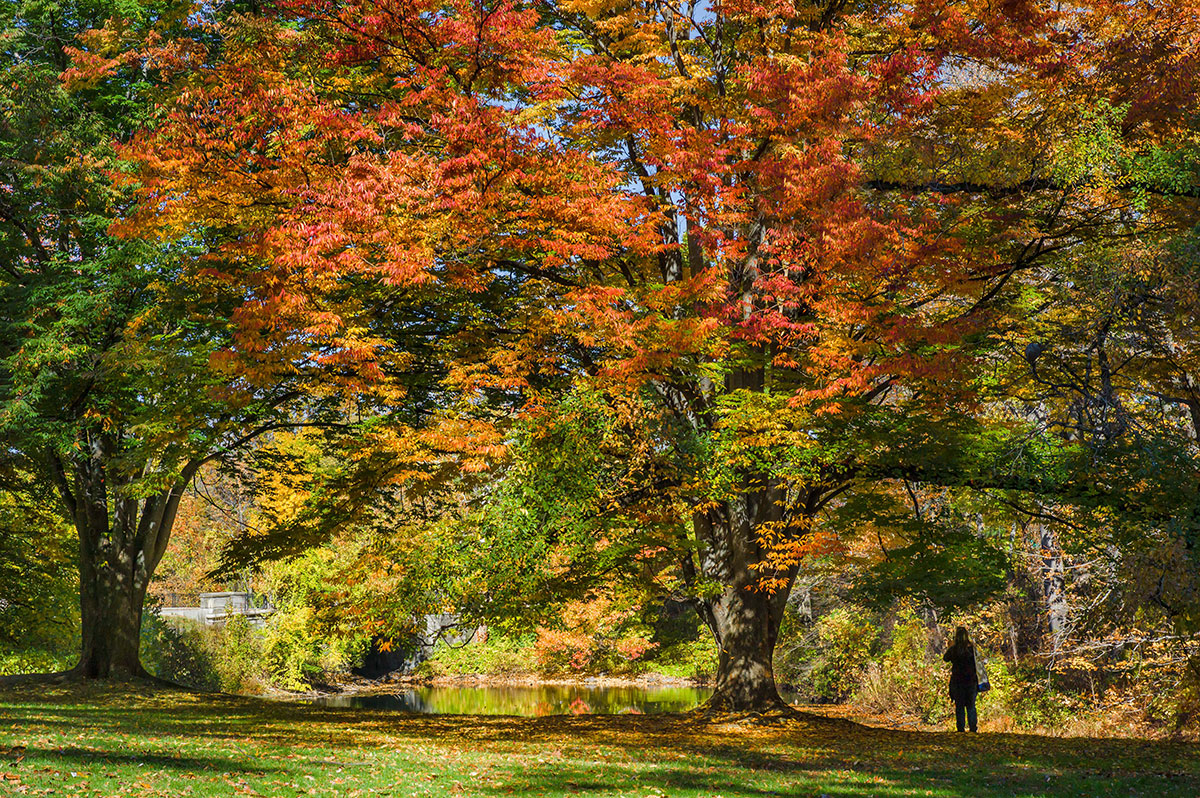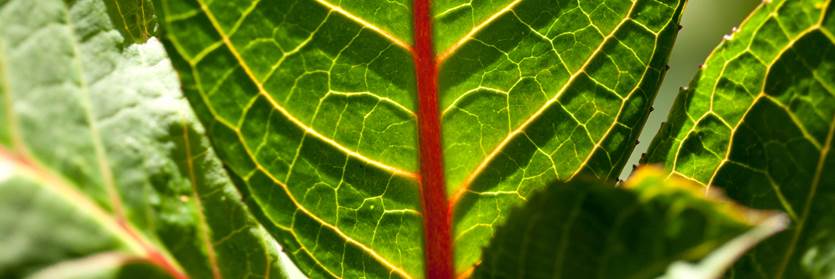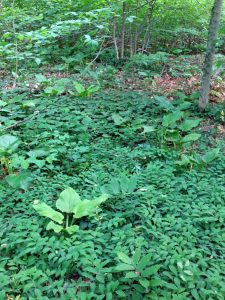From Tree to Shining Tree: The Living Network under the Forest
Posted in Interesting Plant Stories on September 7, 2016 by Stevenson Swanson
Stevenson Swanson is the Science Media Manager at The New York Botanical Garden.

That old saying about not being able to see the forest for the trees turns out to be more than just a metaphor. Standing in the middle of a forest, it’s easy to see each tree as an individual, but in reality, the trees are bound together by a living network that proves beneficial not only for the trees—which get the minerals they need to grow to great heights—but also to the network, which gets a steady supply of nutrients from the trees to keep it alive.
What is this network? That’s the mystery that award-winning science journalist Robert Krulwich sets out to answer in a recent episode of public radio’s Radiolab.
His scientific sleuthing brought him to the Thain Family Forest, the 50-acre old-growth forest at The New York Botanical Garden, where he interviewed Curator of Mycology Roy Halling, Ph.D., the Botanical Garden’s expert on all things fungal. That’s a pretty broad hint about the nature of the network, by the way.
As with all Radiolab stories, the result is an adventure in imaginative reporting and storytelling that revels in the wonders of the world around us. Or, in this case, beneath us.
You can hear the episode here.

